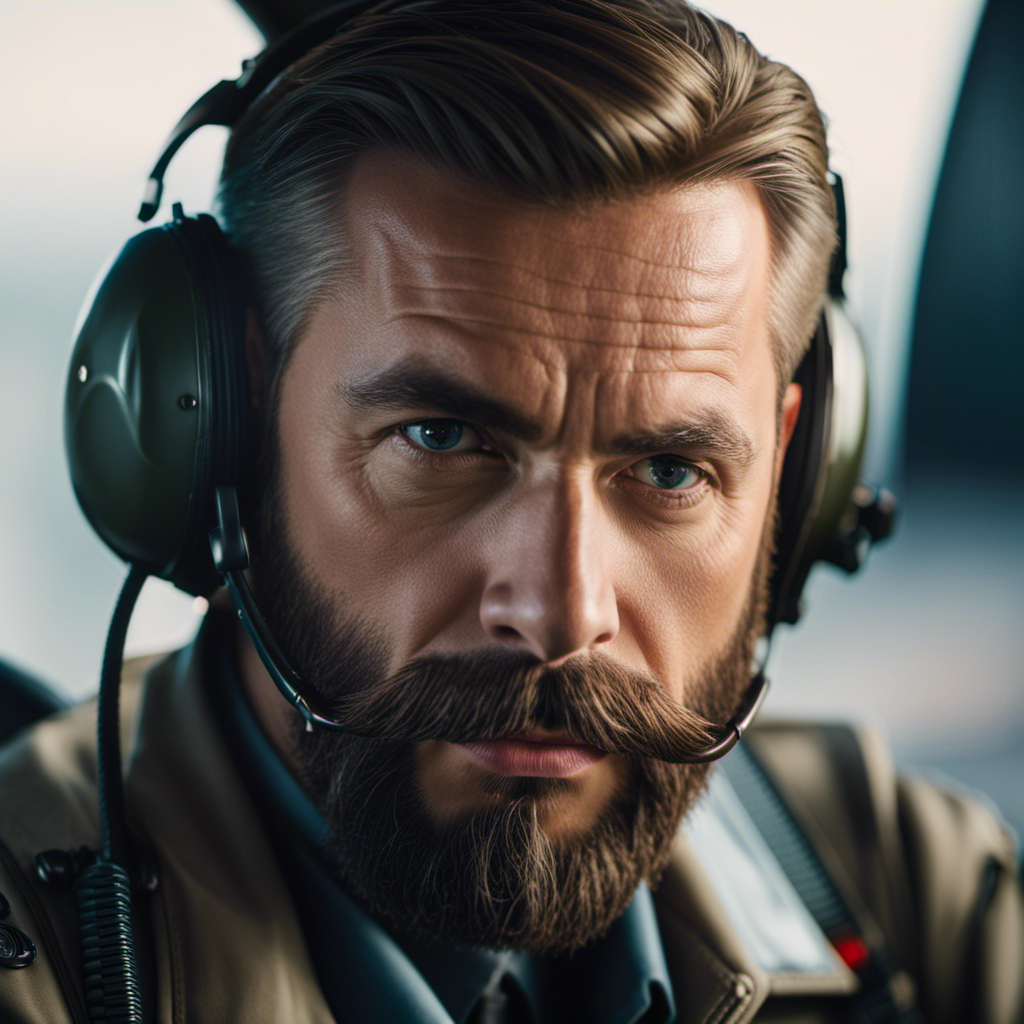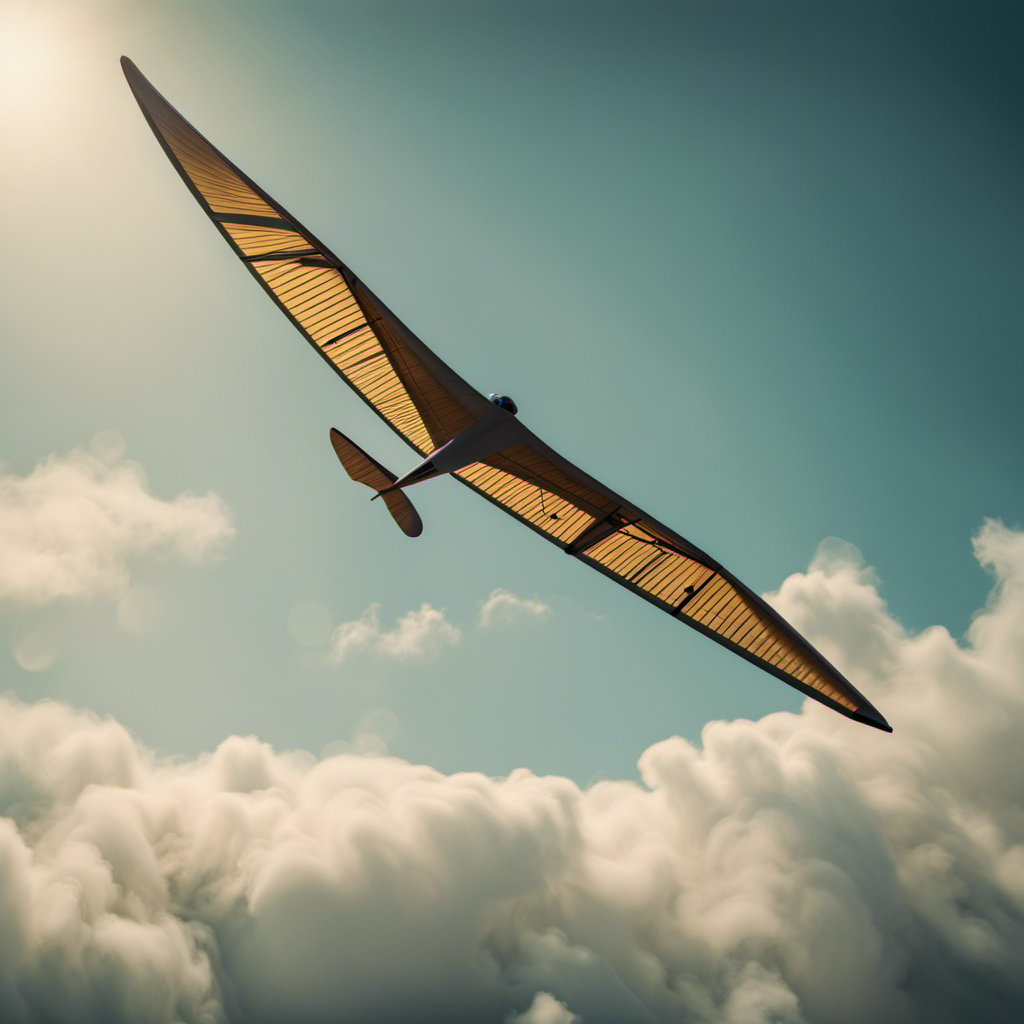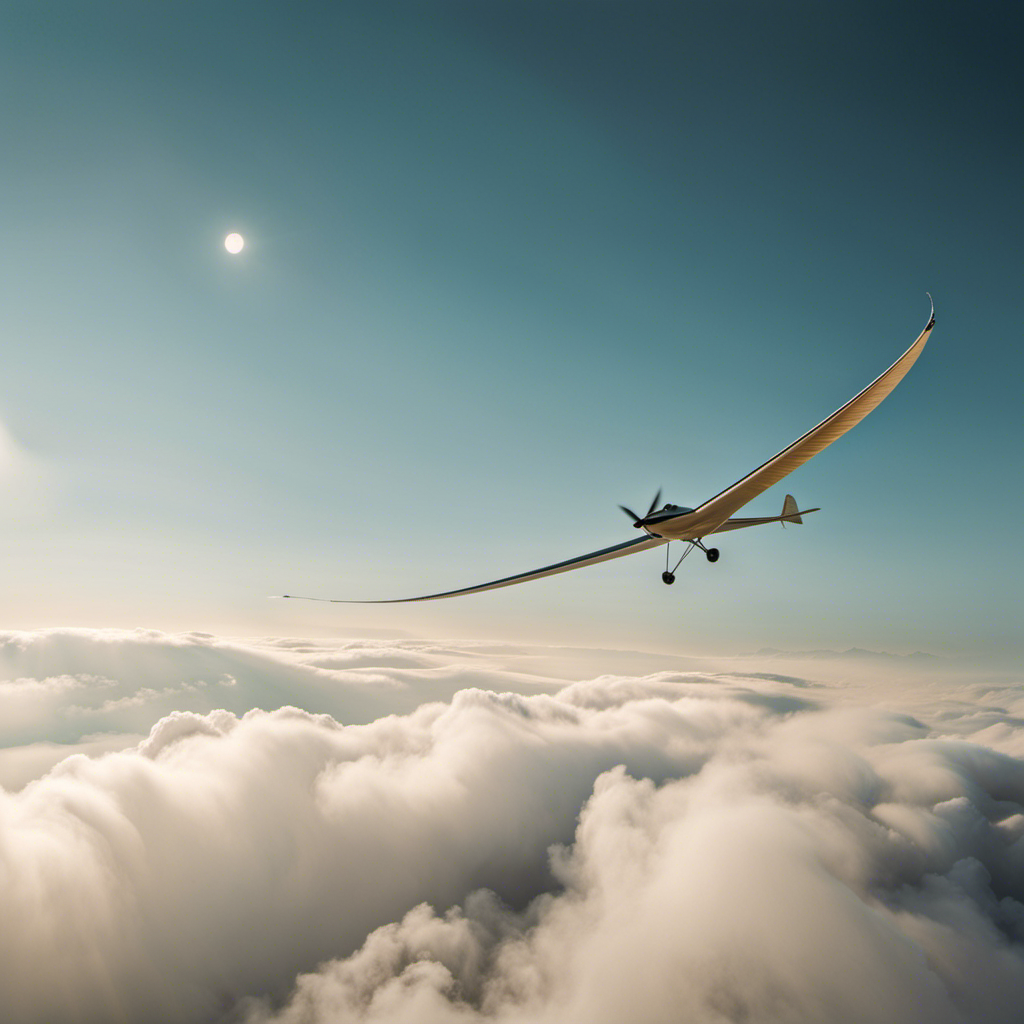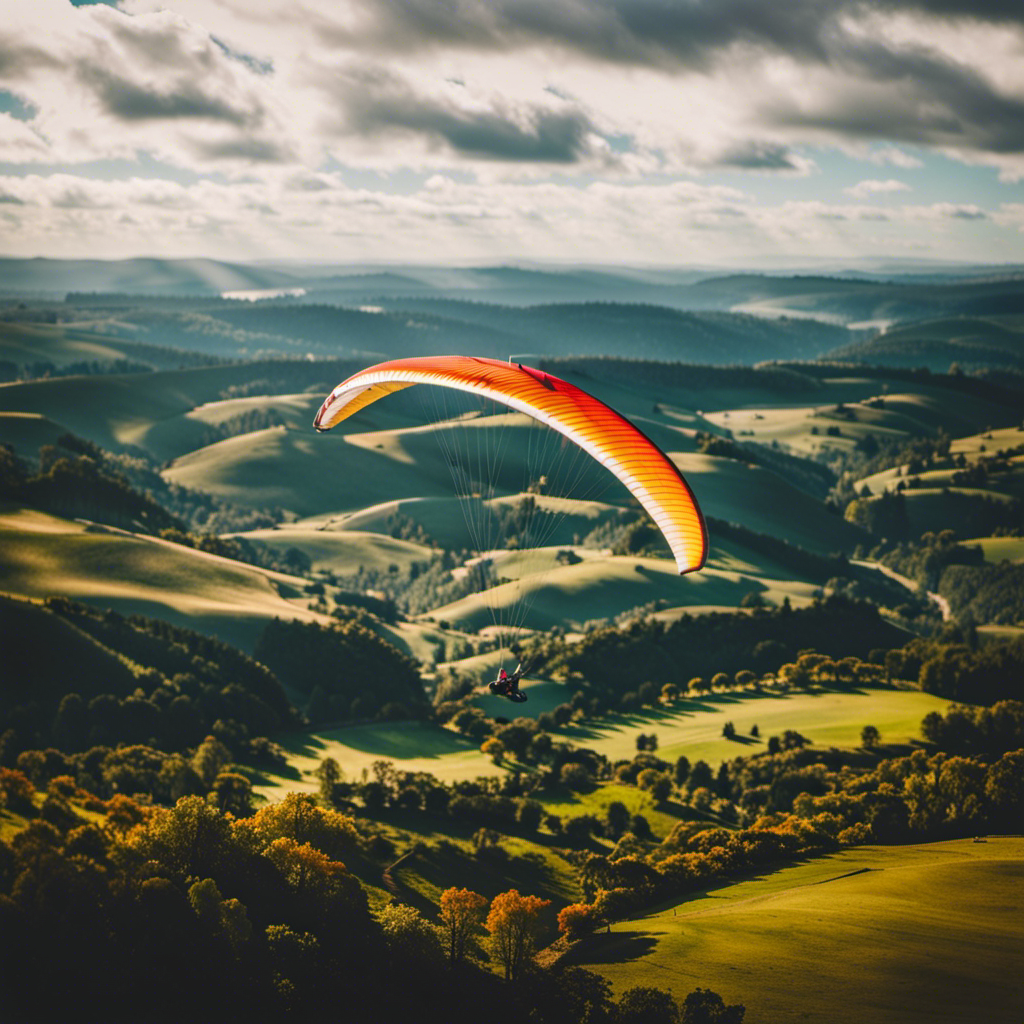Speaking from my own experience as a pilot, I’ve frequently pondered over a longstanding inquiry: are pilots allowed to sport beards? This subject stirs both fascination and discussion within the aviation community.
In this article, we’ll delve into the history of clean-shaven pilots, the significance of personal appearance in aviation, and the safety regulations surrounding facial hair.
We’ll explore the reasons behind the clean-shaven tradition, the impact of facial hair on oxygen mask seals, and the ongoing discussion about gender equality and facial hair policies.
So, let’s embark on this journey to unravel the mystery of beards in the cockpit.
Key Takeaways
- The clean-shaven look is a long-standing tradition in aviation due to its association with professionalism, discipline, and attention to detail.
- Facial hair can interfere with the proper fit of oxygen masks and hinder communication devices in the cockpit, leading to safety concerns.
- Cultural norms vary, with beards being seen as a sign of religious devotion in the Middle East and a symbol of wisdom and masculinity in South Asia.
- While some airlines allow facial hair for religious or cultural reasons, there are guidelines and regulations in place to ensure safety and maintain professionalism.
The History of Clean-Shaven Pilots
You might be surprised to learn that clean-shaven pilots have a long-standing tradition in aviation history. Throughout the years, facial hair trends have come and gone, but the clean-shaven look has remained a constant in the aviation industry.
This tradition can be attributed to various factors, including societal norms and practicality. In the early days of aviation, it was believed that having a beard could interfere with the proper fit of oxygen masks, potentially jeopardizing the safety of pilots.
Additionally, the clean-shaven look has always been associated with professionalism and discipline, qualities that are highly valued in the aviation field.
As we delve further into the discussion about the importance of personal appearance in aviation, it becomes evident that the clean-shaven tradition is just one aspect of the overall emphasis on professionalism and attention to detail in this industry.
The Importance of Personal Appearance in Aviation
Looking professional and maintaining a neat appearance is crucial in the aviation industry. The impact on pilot recruitment and the psychological effects on pilots’ self-esteem cannot be understated.
Airlines and aviation companies place a strong emphasis on personal appearance, as it reflects the professionalism and credibility of the pilot. A well-groomed and clean-shaven appearance instills confidence in passengers and creates a positive first impression.
For pilots, adhering to strict grooming standards can boost their self-esteem and sense of professionalism. It reinforces their commitment to their profession and enhances their overall confidence. However, personal appearance does not only encompass clean-shaven faces. It also involves other aspects, such as hairstyles, uniforms, and accessories.
Now let’s delve into the role of facial hair in safety regulations and its impact on pilots.
The Role of Facial Hair in Safety Regulations
Facial hair can potentially interfere with the proper fit of oxygen masks, which is why airlines often have grooming policies that prohibit pilots from having beards. As a pilot, I understand the importance of personal grooming in maintaining safety standards.
Here are three reasons why facial hair can pose a risk in aviation:
-
Seal integrity: A proper seal is crucial for oxygen masks to function effectively during emergencies. Even a small gap caused by facial hair can compromise the seal, reducing the flow of oxygen to the pilot’s lungs.
-
Communication: Clear and efficient communication is essential in the cockpit. Facial hair can interfere with the proper fit of communication devices, such as oxygen mask microphones or headsets, potentially hindering effective communication between the pilot and air traffic control.
-
Cultural diversity: Airlines operate globally and employ pilots from diverse cultural backgrounds. While personal grooming preferences may vary across cultures, airlines must establish consistent grooming policies to ensure safety and uniformity among all pilots.
Considering these factors, it becomes evident why airlines prioritize a clean-shaven tradition among pilots.
The Reason Behind the Clean-Shaven Tradition
The clean-shaven tradition in aviation is rooted in the need for proper seal integrity and effective communication in the cockpit. Beyond safety concerns, there is also a cultural significance to clean-shaven pilots.
The image of a clean-shaven pilot portrays professionalism and discipline, which are important qualities in the aviation industry. It conveys a sense of confidence and reliability to passengers and colleagues.
However, the psychological impact of facial hair regulations on pilots should not be overlooked. For some pilots, growing a beard or mustache is a personal choice and a form of self-expression. Being forced to conform to strict grooming standards can potentially lead to feelings of frustration and a loss of individuality.
Nevertheless, it is important to understand the impact of facial hair on oxygen mask seals, as this directly affects the safety and well-being of pilots in emergency situations.
The Impact of Facial Hair on Oxygen Mask Seals
When your facial hair is not properly trimmed, it can cause a poor seal on your oxygen mask, compromising your safety in emergency situations. That is why beard regulations exist in the aviation industry to ensure that pilots have a clean-shaven face.
These regulations are in place because facial hair can interfere with the proper fit and function of the oxygen mask. However, there are certain facial hair exemptions that allow pilots to have a beard if they meet specific criteria. These exemptions typically require pilots to undergo a fit test to ensure that their facial hair does not hinder the effectiveness of the oxygen mask seal.
Understanding the impact of facial hair on oxygen mask seals is crucial for maintaining safety in the cockpit. Now, let’s explore the influence of cultural and religious beliefs on beard regulations.
The Influence of Cultural and Religious Beliefs
To understand the influence of cultural and religious beliefs on beard regulations, you must consider the diverse perspectives they bring to the aviation industry. Cultural norms play a significant role in shaping people’s attitudes towards facial hair, and this extends to the aviation community. Different cultures have varying opinions on beards, with some considering them a symbol of masculinity, wisdom, or religious devotion. This diversity of perspectives creates a challenge for aviation authorities when it comes to establishing uniform regulations. To illustrate this, let’s take a look at the following table that highlights the influence of cultural norms on beard regulations in different regions:
| Region | Cultural Norms | Beard Regulations |
|---|---|---|
| North America | Generally accepts clean-shaven appearance | Pilots are usually required to be clean-shaven |
| Middle East | Beards are often seen as a sign of religious devotion | Some airlines allow beards for religious exceptions |
| South Asia | Beards are considered a symbol of wisdom and masculinity | Airlines may permit beards for cultural reasons |
| Europe | Cultural norms vary across countries | Airlines have different policies regarding beards |
| Africa | Beards can be associated with cultural traditions or status | Some African airlines allow beards for cultural reasons |
As we can see, cultural norms have a significant impact on beard regulations in different regions. However, there are exceptions to the no-beard rule that go beyond cultural influence.
The Exceptions to the No-Beard Rule
Exceptions to the no-beard rule can be found in certain airlines that allow facial hair for religious or cultural reasons. While most airlines require pilots to be clean-shaven for safety reasons, some recognize the importance of cultural acceptance and accommodate their employees accordingly. Here are four key factors to consider when it comes to these exceptions:
-
Religious Freedom: Many religions, such as Sikhism and Islam, require men to maintain beards as a symbol of faith and devotion.
-
Cultural Identity: In some cultures, a beard is seen as a sign of maturity, wisdom, or masculinity, and its grooming is an important aspect of personal appearance.
-
Safety Measures: Airlines that permit beards generally have strict guidelines for grooming and maintenance to ensure that the facial hair does not interfere with the proper fitting of oxygen masks or other safety equipment.
-
Professionalism: Pilots with beards are still expected to maintain a well-groomed appearance, with neat and tidy facial hair that does not compromise their professionalism.
Understanding these exceptions sets the stage for exploring the process of obtaining a beard waiver, which involves certain steps and requirements.
The Process of Obtaining a Beard Waiver
Understanding the process of obtaining a beard waiver involves meeting specific requirements and following certain steps. As a pilot, I’m well aware of the importance of maintaining a professional appearance while also respecting cultural acceptance of beard grooming.
To begin, it’s crucial to consult the airline’s policy on facial hair and determine if they offer a beard waiver option. If they do, the next step is to submit a formal request, which typically includes providing a detailed explanation of why a beard is necessary, along with supporting documentation such as medical reasons or religious beliefs.
After submitting the request, it’s essential to await approval from the airline’s authorities. Once the beard waiver is granted, pilots must ensure that their beard is well-groomed and maintained according to the airline’s guidelines.
This transition into the subsequent section about ‘the potential risks and challenges of flying with a beard’ involves considering the potential impact on safety, such as the proper fit of oxygen masks and the potential interference with facial recognition technology.
The Potential Risks and Challenges of Flying with a Beard
Flying with a beard may pose potential risks and challenges. Ensuring the proper fit of oxygen masks and avoiding interference with facial recognition technology are crucial considerations. A poorly maintained beard could hinder the effectiveness of oxygen masks, compromising the pilot’s ability to breathe properly in case of an emergency.
Facial hair can also interfere with facial recognition technology used for security purposes. This interference could potentially cause delays and inconveniences for pilots.
Furthermore, the psychological effects of beard regulations on pilots should not be overlooked. For some pilots, having a beard may be a personal choice and a source of confidence. Restricting this expression could negatively impact their morale and overall job satisfaction.
Considering these risks and challenges, it becomes necessary to explore the views of pilots and airlines on facial hair. This will be discussed in the subsequent section.
The Views of Pilots and Airlines on Facial Hair
To get a better understanding of where you stand, it is important to consider the views of you and your colleagues in the aviation industry regarding facial hair regulations.
Facial hair trends and cultural perceptions play a significant role in shaping these perspectives. Some pilots and airlines believe that a well-groomed beard does not affect one’s ability to perform their duties safely and professionally. They argue that it is a personal choice and that as long as it is neat and trimmed, it should not be a cause for concern.
However, there are those who believe that strict regulations on facial hair are necessary for a uniform and professional appearance. These differing views reflect the ongoing debate surrounding facial hair regulations in aviation.
As we look ahead to the future of facial hair regulations in aviation, it is important to consider the potential changes and adaptations that may arise, keeping in mind the importance of safety and cultural sensitivities.
The Future of Facial Hair Regulations in Aviation
As we move forward, it’s important to consider the potential changes and adaptations that may arise in facial hair regulations in aviation.
The future of facial hair regulations will likely be influenced by the evolving facial hair trends and grooming practices. Here are three possible scenarios for future grooming trends in aviation:
-
Increased acceptance of well-groomed beards: With the growing popularity of beards in society, aviation authorities may relax their regulations to accommodate well-maintained facial hair styles.
-
Stricter regulations for hygiene and safety reasons: As concerns about cleanliness and safety intensify, aviation authorities may impose stricter guidelines on facial hair maintenance to ensure proper hygiene and the effectiveness of oxygen masks.
-
Individual airline policies: Airlines may adopt their own facial hair policies, allowing pilots to have beards based on their specific brand image or customer preferences.
Considering the potential changes in facial hair regulations, it is crucial to address the ongoing debate on gender equality and facial hair policies in aviation.
The Debate on Gender Equality and Facial Hair Policies
It’s important to address the ongoing debate on gender equality and facial hair policies in aviation. This debate raises significant questions about fairness and discrimination. Gender discrimination is a concerning issue that affects various aspects of our society, and the aviation industry is no exception.
Facial hair policies can inadvertently contribute to gender discrimination by imposing different standards for men and women. These policies may also disregard cultural diversity, as different cultures have different norms and beliefs regarding facial hair.
It is crucial to evaluate and revise these policies to ensure equal treatment and representation for all genders in the aviation industry.
This leads us to the subsequent section, where we will explore the role of facial hair in pilot identity and professionalism. This will shed light on the importance of this topic in the aviation community.
The Role of Facial Hair in Pilot Identity and Professionalism
Understanding how facial hair contributes to your identity as a pilot and impacts your professionalism is essential in recognizing the significance of this issue within the aviation community. As pilots, our appearance plays a crucial role in shaping public perception and ensuring passenger confidence. Here are three key points to consider:
-
Cultural significance of beards: Beards have long held cultural significance, representing wisdom, maturity, and masculinity. Pilots with beards may identify with this symbolism and view it as an integral part of their personal and professional identity.
-
Psychological impact on confidence: For some pilots, facial hair can boost confidence and self-esteem, positively influencing their performance in the cockpit. It can create a sense of authority and establish rapport with fellow crew members.
-
Professionalism and hygiene standards: While beards can enhance a pilot’s image, it is crucial to maintain strict hygiene standards. Airlines often have policies in place to ensure that facial hair is well-groomed, not interfering with the proper fit of oxygen masks or compromising safety protocols.
Considering the cultural significance of beards and the psychological impact on pilot confidence, it is important to explore the perspectives of passengers on pilots with beards, which will be discussed in the following section.
The Perspectives of Passengers on Pilots with Beards
Consider the opinions of passengers when it comes to pilots who choose to sport facial hair. Passengers’ preferences and cultural acceptance play a significant role in shaping the aviation industry’s stance on beards.
Some passengers may prefer their pilots to be clean-shaven, associating it with a more professional and trustworthy image. However, others may view facial hair as a symbol of maturity and experience.
Ultimately, the acceptability of beards among pilots depends on the airline’s specific grooming policies and the cultural norms of the regions they operate in. Airlines must navigate the delicate balance between meeting passengers’ expectations and respecting their pilots’ personal choices.
This ensures that both passengers and pilots feel comfortable and confident in their roles.
The Conclusion: To Beard or Not to Beard?
So, should you sport a beard or go clean-shaven as a pilot? As a pilot, maintaining a professional appearance is crucial, but the decision ultimately depends on personal preference and company policies. Here are three factors to consider:
-
Cultural Diversity: Aviation is a global industry, and different cultures may have varying perceptions of facial hair. Being aware of these cultural norms and respecting them is essential to creating a harmonious environment for passengers and crew members alike.
-
Grooming Tips: If you choose to have a beard, it’s important to keep it well-groomed and tidy. Regular trimming and shaping can help maintain a polished and professional look. Additionally, using beard oils or balms can help keep the facial hair soft and moisturized.
-
Company Policies: Before growing a beard, it’s crucial to check your airline’s policy regarding facial hair. Some airlines may have specific guidelines on beard length, cleanliness, and grooming standards.
In the end, as long as your appearance aligns with professional standards and respects cultural diversity, it’s up to you whether to sport a beard or go clean-shaven as a pilot.
Frequently Asked Questions
Are there any exceptions to the no-beard rule for pilots?
Yes, there are exceptions to the no-beard rule for pilots. The beard waiver process allows pilots to have beards if they meet certain criteria and pass safety inspections. However, safety considerations are always prioritized.
How can pilots obtain a beard waiver?
To obtain a beard waiver as a pilot, one must go through a rigorous process. The reasons for beard restrictions include safety concerns regarding the proper fit of oxygen masks. Safety always comes first.
What are the potential risks and challenges of flying with a beard?
Flying with a beard can present challenges related to beard hygiene and cultural differences. Maintaining a clean and well-groomed beard is crucial to ensure proper mask fit and prevent potential interference with oxygen masks. Additionally, cultural norms may vary regarding facial hair in aviation.
What are the views of pilots and airlines on facial hair?
As a pilot, I understand the importance of adhering to pilot grooming standards. Facial hair, while culturally significant in aviation history, is generally not allowed due to safety concerns and the need for a proper seal with oxygen masks.
What is the future of facial hair regulations in aviation?
The future of facial hair regulations in aviation is influenced by facial hair trends and cultural implications. It is important to consider these factors when determining the grooming policies for pilots and ensuring safety and professionalism in the industry.
Conclusion
In conclusion, the decision of whether pilots can have beards is not just a matter of personal style, but one that involves safety regulations and the perception of professionalism.
While some argue for the importance of clean-shaven faces in maintaining oxygen mask seals and upholding the traditional image of a pilot, others advocate for gender equality and the acceptance of facial hair.
So, the question remains: should we prioritize tradition and safety or embrace diversity and equality in the aviation industry?
With a heart that soars as high as the skies, Aria, affectionately known as “Skylark,” is the driving force behind Soaring Skyways. Her journey into the gliding world began as a young dreamer gazing up at the soaring birds, yearning to experience the weightlessness and freedom they embodied. With years of experience both in the cockpit and behind the scenes, Aria’s commitment to the gliding community is unwavering.










